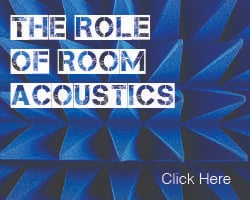First Watt’s new F7 power amplifier (MSRP: $3,000) is a very unique power amplifier says the company’s press release that’s just landed at Hifi Pig. It’s a two-stage push-pull JFET (input)/MOSFET (output) topology with fewer parts than any First Watt amplifier to date. The new F7 has been created as an updated version of the earlier F5 amplifier. Conceived in 2007, the F5 was a push-pull Class A amplifier employing eight semiconductors and 23 resistors to achieve 25 watts output with good specifications and good sound. 
According to Nelson Pass: “The F7 bests the earlier F5, comprising even better sound and even simpler circuitry.”
Like all First Watt designs, it is a relatively low power (25W/channel into 8-ohms) simple Class A circuit, designed with an unusually low parts count. It is the 19th product from First Watt, since its founding in 1998 as Nelson Pass’ “personal laboratory”.
Explaining First Watt, Nelson Pass says: “I spend a lot of time building and evaluating basic amplifier concepts with an eye toward producing the highest quality sound with elegantly simple circuits.
“There is no such thing as a perfect amplifier, but there is a best amplifier for each type of speaker, music, and listener. Each First Watt model is a unique design and is ‘best’ in some particular way. They look alike because they all use the same basic chassis and power transformer. On the up side, it makes it easy for me to test ideas and compare different designs with the hardware being a fixed constant.
“Looking for tomorrow’s faceplate with yesterday’s circuits? You’re in the wrong place.”
The desire for a simpler circuit is self-explanatory – apart from the aesthetic, Nelson Pass believes that that simpler circuits tend to sound better: “In such a simple circuit, there are opportunities for improving performance by careful choice of transistors, resistor values, voltage and current values and precise matching of parts.”
The F7 has most of what was on his Wish List:
Very wide bandwidth
Low distortion and noise
Large Class A operating region
Less feedback
No degeneration in the output stage
Very low thermal distortion and drift
No capacitors or transformers (apart from the power supply)
Uniquely, it incorporates a very innovative balance of very low Negative Voltage Feedback and a small amount of Positive Current Feedback to give an “astonishing measure of control over reactive loudspeaker” loads.
Modest amounts of Negative Feedback are balanced in counterpoint to a small amount of Positive Current Feedback, creating an equilibrium where the output impedance approaches zero, improving transient and frequency response. “Of course you can achieve a similar effect with tons of negative feedback, but I think this is more elegant and sounds better. For brevity, I call it ‘PCF’,” explains Pass.
“Also, I put more capacitance in the power supply and found a clever way to further reduce the effect of high frequency DAC noise and environmental RF. This is a different amplifier. The diversity of audio taste being what it is, not everyone will prefer it. I presume that a certain segment of audiophiles will like it.”
MSRP Price: $3,000
Dimensions: 17W x 15D x 5.5H
Weight: 30 lbs.
Warranty: Parts and labour for 3 years, not covering shipping costs or consequential damages.




















































































































































































































You must be logged in to leave a reply.